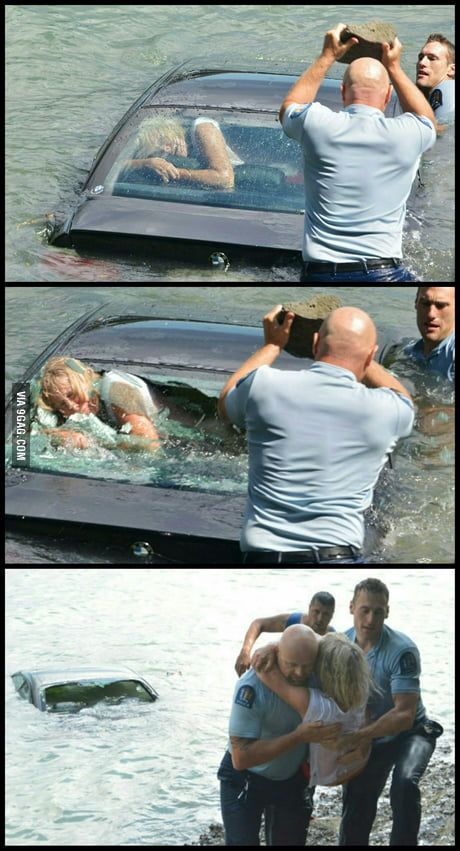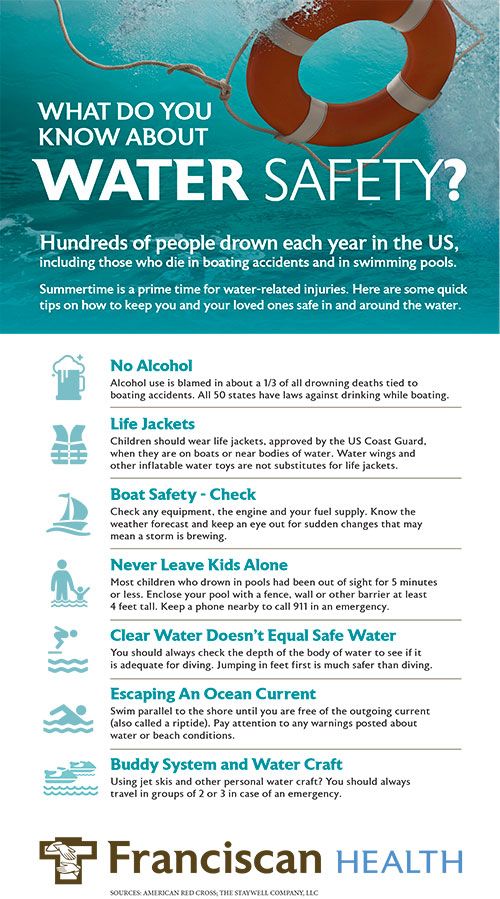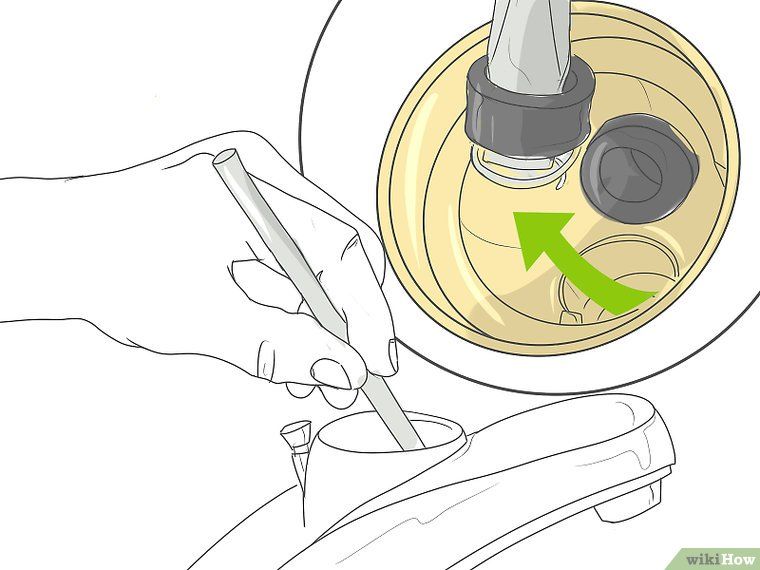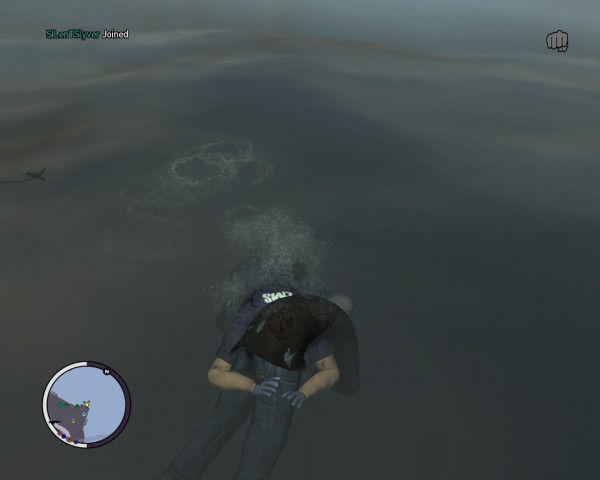There are plenty of great things that you love in ATV off-roading. And there is one thing that may turn an awesome ride into a nightmare. It's drowning your quad.
It’s absolutely thrilling to race across hills and valleys, enjoy spectacular views, and explore new muddy trails. Usually, it means you have to drive through deep mud holes, ponds, lakes, or even streams. However, getting water in your quad’s engine is one of the easiest ways to totally ruin your four-wheeler. It’s more common trouble than you might think, and it may happen not only when you contrive to sink your quad to the bottom of the deep blue sea.
When you drive fast through deep puddles, the water may get into the air intake, and then enter the engine system. Experienced riders who are used to challenge waist-deep mud usually install snorkels which allow them to ride through the deeper holes, but you are not a hundred percent safe even then.
So, what’s the problem? When water enters one or more cylinders, your engine becomes hydrolocked.
Attention! The key thing you should keep in mind – if you get stuck in the middle of puddle and the water is seeping in your engine, DO NOT TRY TO START IT!
It's better to get wet by falling into the water than to kill the motor. Take a deep breath, and cool down. You have a lot of work to do and not let your ATV die. Follow these steps.
When you drown your quad, hit the kill switch. Get your ATV out of the water as soon as possible. At this point your main goal is to prevent more water from leaking in everywhere.
Hook your drowned vehicle to your buddy’s ATV or use a winch to tow it on the bank.
Off-road are the core piece of riding gear for ATV & UTV riders
Find out the best look for you
Ask your buddy for assistance and tip your quad 90 degrees backward. It should allow water to flow out of the exhaust, cylinders, and CVT.
Once it stops, set the quad down on the ground.
These are “first-aid” steps you need to make on the spot. From this point it’s better to tow the vehicle to your garage or service where all the tools are at hand.
Image from: kvadromanual.com
If you can’t get evacuated, continue your ATV recovery. Take off the seat, inspect the air box and remove the air filter.
Look carefully at your air intake and clean everything. Make sure that there is no water and mud left in the air box so that your ATV’s engine will be safe when you start it.
If you have a carbureted vehicle, open your carb drain and let it drain for about a minute, then close it.
Loosen your engine oil drain bolt, open it carefully until water starts to flow. Once you see oil comes out reinstall the bolt. Let it sit for 10 minutes, then repeat as many times as needed until you no longer see any water coming out.
This is how milky oil looks like // Image from www.hondaforeman.com
Now it’s time to inspect your engine. Remove the spark plugs. Start the engine to force out any water from the cylinders.
How to be sure that remaining water is completely out? Refill oil to the engine and turn it over again, with no plugs in it. Wait for a few minutes, and check the oil color.
If there is any water left, the oil will look like a milky substance. In this case drain and change the oil, and start the engine over. Do it again and again until the oil is clean. Depending on how much water is in the engine, it may take up to 8-9 reps.
Clean and reinstall the spark plugs. Try to start your ATV. If it starts, let it run at idle speed for a few minutes. Then, shut it off, refill it with your normal oil and oil filter. Run it again for a couple of minutes, shut it off, and check for milky colored oil again.:no_upscale()/cdn.vox-cdn.com/uploads/chorus_asset/file/19505422/07_toilet_terms.jpg) If you have none, your ATV is ready to go.
If you have none, your ATV is ready to go.
Off-road are the core piece of riding gear for ATV & UTV riders
Find out the best look for you
This guide will help you start the submerged ATV again and ride back to where you’ve started. Don’t forget to carry out the complete revision procedures afterwards.
You should check the fuel system, and transmission, flush the brakes, and look for any water droplets left on electric connections. Of course, in some cases, you will need to order a few spare parts. Your quad deserves your care. And you deserve well-functioning vehicle and more exciting ride next time.
However, this how-to guide is not a magic wand that will prevent any swamped ATV from being broken down. So, if you have completed all the steps above, and the engine still doesn’t run, or runs uneven, the best decision is to call your experienced mechanic.
We do hope that none of these things will ever happen to you. In case you have any doubts that the ford is too deep for passing, remember, you wear waders not just for fun. They will keep you dry while you are wading and measuring the water with your feet, instead of risking your quad.
In case you have any doubts that the ford is too deep for passing, remember, you wear waders not just for fun. They will keep you dry while you are wading and measuring the water with your feet, instead of risking your quad.
Also think about adding a snorkel kit, if you still don’t have it. It will allow you to go through deeper water with no crucial damage to the engine.
ENDURO
the most durable
229 EUR
AQUAMASTER
reliability & comfort
567 EUR
SPEEDMASTER NEW
179 EUR
RACHEL
for women
537 EUR
Explore all
Whether you are stuck with the misfortune of sending your ATV through the ice on a frozen lake, or if you’ve sunk it into a bottomless mudhole, there are some crucial steps you need to take to save your bike from the junkyard.
I know exactly how you feel right now, but fear not! The bike is not necessarily trashed; you can most likely salvage it without breaking the bank.
If you are somewhat mechanically inclined, you should have no problems performing this recovery on your own. If there is no engine damage, your bike has a good chance of getting back in shape without any permanent damage.
All you have to do is to follow the steps in this guide.
Yes, there are a lot of steps, but not all are too time-consuming. Time-vise you should set aside the better half of a day to do this properly.
If you skip some steps or parts of the steps, you may find yourself paying the consequences later, so take your time to do it properly.
Page Contents
Before I get into the actual steps, I’ll address why water sometimes may enter your engine. Because it is not only when you sink the bike to the bottom of the ocean this may happen.
If you ride fast through deep water, it may splash up into the air intake, sucking water into the engine. Riders who intentionally ride in waist-deep mud install snorkels to prevent this from happening, but you are not safe even then.
When adequate amounts of water enter the engine, it will hydro lock. And it actually takes a surprisingly small amount of water for this to happen.
I won’t get too technical as I’m not claiming to be a trained mechanic. But basically, what happens is that when the piston goes up in the cylinder, it compresses the air above the piston just as it is supposed to.
But unlike air, water cannot be compressed, at least very little. So if you get more water inside the cylinder than the volume above the piston, when it is at its highest point (not very much!), the excess water has nowhere to go.
The piston cannot complete its travel. It’s like trying to fit 2 liters of water inside a 1-liter bottle. It cannot be done.
When this happens, one of two things will occur:
If you are lucky, all that happens is that the engine stops; it dies out instantly when the piston cannot travel any further. This is a more likely outcome if the hydro lock happens when the engine is idling or when you are not using too much power.
This is a more likely outcome if the hydro lock happens when the engine is idling or when you are not using too much power.
The engine can also die out before any damage is done to the engine if it chokes out because of water entering the air/fuel mixture.
If you are not so lucky, you will get one or more mechanical failures like bent or broken piston rods, fractured crankcase, engine head or engine block, damaged bearings or valves.
All this because the piston tries to neglect the laws of physics. Keep in mind that damage to the engine is more likely when the hydro lock happens at speed.
If you hear any abnormal metal sounds when the water enters, you may be out of luck. You may be able to bring back to life a damaged engine after a substantial rebuild, or in the worst-case, you may need to replace the whole engine.
If you have completed this guide, including installing new spark-plugs, and the engine still won’t run, or it runs rough, it’s time to start thinking of calling your favorite mechanic.
A simple compression test may give you a good indication if everything is as it’s supposed to be.
But now you have quite a lot of work ahead of you, so let’s start recovering!
As soon as you get water into the engine, hit the kill switch and get a buddy. The bike needs to get out of the water as soon as possible to prevent more water from seeping in everywhere.
You will need a winch, or a tugboat, depending on how deep of a mess you’ve gotten yourself in.
Turn off the key. Please put it in neutral and tow it on shore.
At this point, you are your own worst enemy. You are panicking and may be acting irrationally.
Doing the wrong things now will only make the situation worse.
So before you move on, you need to make sure you are thinking clearly. Now is not the time to do anything hasty.
Whatever you do, DO NOT try to start the engine at this point. It is most likely hydro locked, and trying to start it may cause or worsen any damage that already has occurred.
It is most likely hydro locked, and trying to start it may cause or worsen any damage that already has occurred.
Your air filter box will likely be full of water at this point. The box needs to be cleaned to prevent more water or dirt from entering the engine.

Get help from a buddy or three and tip the bike 90 degrees backward until water stops running out of the motor and the exhaust. Then set it back down again.
Now you are done with the initial “first-aid” and should get the bike to wherever your tools are.
Tow it, put it on a trailer, or airlift it with a helicopter. But do not ride it at this point!
When you get home, your goal will be to get the water out of the engine as soon as you can.
Clean out the air inlet if there is any mud, muck. Ensure there is no mud left so that you don’t suck in any additional debris into the engine when you start it.
Do not forget to clean the breather tubes. Disassemble them, rinse them in water and let them dry before you reassemble them.
Depending on how long your bike was submerged, water may have entered the stator housing. Remove the stator cover, and some water will likely pour out.
Use an air compressor to blow from all angles to get most of the water out. Then use a hairdryer or any hot air blower to dry out the rest of the moisture. Be careful, so you don’t melt anything, keep some distance with the blower.
If you don’t have these tools, you need to wait longer for the stator to dry out. But make sure the stator housing is completely dry before reinstalling the cover.
If your bike has a belt-driven transmission, you need to drain out all of the water. Most bikes have a drain plug at the bottom that you can open. If your bike doesn’t have this, you need to open the belt housing cover.
If you were riding in some muddy water, you should preferably open the cover in any case to clean the inside and the pulleys. Let dry before you reassemble. If you ride with a wet belt, you may get belt burning.
If your bike was completely submerged, you need to flush the cooling system to remove any contaminated water. Water may have entered through the overflow.
Water may have entered through the overflow.
Drain it. Run it with clean water for some minutes. Drain again and fill up with the factory spec coolant.
Again, if the bike was completely submerged, you will likely have gotten water inside your gas tank. Drain the tank and also the carburetor or the throttle body which holds the injector.
If you are lucky, you will find a small screw at the very bottom of each of these components for easy draining. If not, you have to be creative.
If the carburetor does not have a drain screw, you can alternatively drop the float bowl (the bottom part, held in place with 4 screws).
Also, disconnect the throttle body/carb air duct inlet tube and dry out.
If your bike has a carburetor and you want to do an extra thorough job, you should consider cleaning the carburetor inside to be completely certain you got rid of any remaining moisture or dirt.
Take the carburetor out of the bike and disassemble it. You can leave the floater in place, but it’s best to remove the jets for better access.
You can leave the floater in place, but it’s best to remove the jets for better access.
Use compressed air to blow in any hole and angle to get as much of the water out. Spray it with carb cleaner. Then let it dry completely before reassembling.
If the bike was submerged for some time, the gaskets may also be soaked in water and need drying or replacing. They are only a few bucks, so a re-pack is recommended.
With the carb off, use a paper towel to clean both the intake manifold and the reed valve area (outlet).
Then refit the carb to the bike.
Now it’s time to start the engine to blow out any remaining water from the engine. You will also lube it to prevent the internals of the engine from rusting.
Remove all spark plug wires and spark plugs (or the injectors if the bike is fuel injected). This is done to create an opening for the water and pressure to escape when the cylinder is moving.
Do not skip this part because failing to create an opening at the top of each cylinder will possibly lead to hydro-locking and damage to the engine! Consider yourself warned.
Turn the engine several times until it stops squirting water out of the holes where the spark plugs or injectors were. Use the kick starter if the bike does not have a starter. A good 5 minutes of kicking should do the job.
Put everything back in place and start the four-wheeler. Don’t rev it. Let it idle for some minutes to let it clear the exhaust.
While it runs, spray some WD40 into the air inlet to lube up all of the motor’s insides and displace any water. Some think seafoam is better, but be aware that it may gum up your carburetor.
If you spray too much, you will choke out the motor, so spray just short bursts at a time until you have gotten a general amount of lube inside the engine.
It will smoke like crazy because of the water evaporating and the wd 40 burning but don’t be alarmed; this is normal. At least for the first couple of minutes.
If your bike has plugs, they were likely fouled when the bike hit the water and needs replacing before you will be able to start the bike.
Then it may start and run for some seconds before it dies again.
Expect to go through about 3-4 plugs before you get the bike going. A minimal amount of water left in the engine will be enough to foul the plug when initially trying to start it.
Be patient, and check for a spark. Using starter fluid or even trying to jump-start the bike is not recommended as this will only result in more fouled plugs.
As long as the bike runs rough, try replacing the spark plugs as they are likely gone bad.
You may have been lucky and avoided getting water into the engine oil, but it’s not worth risking it if you are not sure. You may be able to see the water mixed with oil by pulling out the dipstick.
You will get a definite answer as soon as you drain the crankcase. If the oil got water into it will not look black (or clear brown if it was new). It will look light brown and mushy, almost like creamy coffee.
After draining the contaminated oil, fill up with ordinary diesel to flush out any bad oil and water. Because of the diesel’s limited lubing abilities, you should not ride the bike or rev it with diesel in the engine.
Because of the diesel’s limited lubing abilities, you should not ride the bike or rev it with diesel in the engine.
Don’t even bother with installing a filter, as it will need replacing anyway. Just put the cover back on with no filter. If the bike cannot be started without a filter installed, just use a cheap one.
Start the engine and let it idle for a couple of minutes. Stop the bike and drain the diesel. Repeat one more time, or until you see only clear diesel.
The final time, let it drain for 30 minutes to get most of the diesel out.
Then you should fill up with some cheap engine oil to the maximum mark on the dipstick. You can skip the diesel altogether, but then you will need to use more oil, which costs more.
Start the bike and let it idle for 10 minutes to allow the oil to mix with any remaining water or diesel. Drain and repeat one more time.
After draining the second time, you can install a new filter and quality oil according to factory spec.
Now you are done!
Start by opening the cap where you would normally fill oil. Stick your little finger in and dip it in the oil. If the oil is clear, you are OK and can move on to the next step.
If it is creamy white, like the engine oil, water got in, and it needs replacing.
Drain all of the oil. You may need to tilt the bike to both sides to get it all out. If you have access to an air compressor, you will get even more oil out by blowing air into the filler hole on top.
Fill up with some cheap oil as you did with the engine. Ride the bike for some minutes and immediately drain out the oil again. Repeat until the oil looks clear.
Then fill up with the manufacturer-specific oil according to the specs in the manual (usually until oil runs out of the overflow/fill hole with the bike on a level surface).
Really? Arent the brakes a sealed system, you may ask. How can water get in?
How can water get in?
Well, the reservoir at the master cylinder will have a vented cap that allows air to enter or escape any time the cylinder is depressed or released. And if this cap ends up below water, water will enter the brake system.
Get some new brake fluid that matches your user manual’s requirements (usually DOT3/4). Start flushing the system by bleeding the brakes while you top of with new brake fluid regularly.
DO NOT let the reservoir tank level drop below the minimum mark, as air may enter the system, and the whole job will take much more time than necessary.
Continue until clear brake fluid starts to appear at the nipple.
This step is mostly done to prevent any issues down the road.
Disconnect all accessible electrical connections and inline fuses and blow them out. Give them a shot of WD40 before you reconnect them.
This will prevent any corrosion and bad connections later on.
Simply because it deserves it; after all, you’ve put it through! This will also prevent rust.
You won’t scare ATV owners with a water barrier – after all, we have an all-terrain vehicle under us, and not an urban “passenger car”.
But it also happens that the ATV cannot cope with deep mud or ford, and gets stuck. This situation is not rare, so everyone who gets behind the wheel of such equipment should know how to act.
Fortunately, all ATVs have a reliable and simple device, including drowning. Therefore, even if your all-terrain vehicle is completely submerged, this does not mean that it has died. If you act quickly and correctly, very soon you will be able to drive again.
Consider two situations:

In the first case, the most important thing is not to try to start: you can only complicate the problem.
In the second case, our actions depend on how deep the ATV has sunk. If the snorkels or the inlet are hidden under water, turn off the engine. If they remain above the surface, you can try to get ashore. To do this, you can either turn back along your trajectory, or choose another route if it is shorter. Just be sure to check the depth and hardness of the bottom so as not to drown the ATV completely.
If you didn’t manage to leave, and the engine eventually stalled (by itself or you turned it off) - the following options remain:
If none of the methods helped, you will have to look for a more powerful technique that will pull out the “drowned man”. If you have to leave the place of events for this, do not forget to mark it. The easiest way is to tie something bright on the nearest tree.
If you have to leave the place of events for this, do not forget to mark it. The easiest way is to tie something bright on the nearest tree.
Important: ideally, the ATV should be evacuated to a place where there are conditions for normal inspection, drying and replacement of consumables. All steps listed below should be taken only if it is not possible to call a tow truck.

 This container must be heated over a fire or burner to evaporate excess water.
This container must be heated over a fire or burner to evaporate excess water. When you get (whether on your own, in tow or by tow truck) to the garage, the ATV will have to be serviced more thoroughly.
If you haven't done something from the list above, do it.
If you have carried out the whole range of rescue operations while still on the shore, upon returning to the garage (or service station):
Important: These steps are worth doing even if you started the ATV after drowning and rode it back normally. It may be that the water has remained somewhere - in the future this can lead to bad consequences.
It may be that the water has remained somewhere - in the future this can lead to bad consequences.
From time to time the quad is acting up and not behaving as you would like. Nothing beautiful lasts forever, right?
One of the most common faults you may encounter is the ATV suddenly pulling to the left or right.
If you're lucky, your problem may have a simple solution)
Let's take a look at some of the most common causes of ATV pulling to the side, and of course, here's how to get rid of these problems.
The most common problem that causes the ATV to pull to one side is the difference in rolling resistance due to different tire pressures. Also, the problem may be associated with natural wear or damage to various components of the chassis of the ATV and, as a result, a violation of the angle of the wheels.
So how do you determine what is causing problems when riding an ATV?
As you probably already understood, there can be several reasons.
To understand why an ATV wants to pull off the road and dive into a ditch when you really don't want to, you need to do a number of checks.
Although I don't have exact statistics to tell you which malfunction occurs most often, I still recommend that you start with what is easiest to check and fix before spending time and money on more non-standard and potentially more complex searches.
In my experience, the most common cause, and by far the easiest problem to check and fix, is uneven ATV tire pressures.
Let's look at what happens when ATV tires have different pressures.
A flat tire has a larger area of contact with the road surface than a normally inflated wheel, as a result of which the friction force, and hence the rolling resistance force, applied to such a wheel will be higher. The wheel will roll more slowly. The opposite wheel will run ahead and try to turn the ATV around the slow wheel. That is, if the ATV pulls, for example, to the left side, most likely, the fact is that the left wheel is lowered.
The wheel will roll more slowly. The opposite wheel will run ahead and try to turn the ATV around the slow wheel. That is, if the ATV pulls, for example, to the left side, most likely, the fact is that the left wheel is lowered.
To solve this problem, you need to equalize the air pressure in the ATV tires. It is best to refer to the operating instructions, which must indicate the required air pressure in the wheels recommended by the manufacturer. The pressure in the wheels installed on the same axle of the ATV must be the same.
At the same time, you should be aware that due to the design features and weight distribution of the ATV, the tire pressure on the front and rear axles may differ. MOTAX and YACOTA have these sensors in the standard tool kit. If there is no such device in your kit, I recommend that you definitely purchase it. A very slight difference in air pressure in the tires may well be the reason that the ATV pulls to the side when driving in a straight line.
The air pressure should be checked in both the front and rear tires. True, uneven pressure in the rear tires, most likely, will not be the reason for the withdrawal of the ATV from a straight path. Different pressure in the rear tires can provoke another malfunction - premature wear of the rear differential, due to the increased load on it. But this is a story for a separate review.
I always keep this inexpensive instrument in my tool kit, its accuracy is good enough to use.
Also make sure that the maximum tire pressure is not exceeded.
Over time, ATV wheels can wear differently, resulting in the diameter of one wheel being different from the diameter of another wheel. This can also cause the ATV to pull to the side.
To check if the front wheel diameters are the same, you can do a simple check: place the ATV on a level surface and use chalk to make a mark on the sidewall of each front tire at the lowest point.
Wheels must be pointing straight ahead, gear lever in neutral position. Roll the ATV forward until one of the wheels has made two or three revolutions and the mark you just made is back to the very bottom, to its original position. Look at the mark on the opposite tire. Ideally, it should also be at the very bottom. If this is not the case, the wheel circumferences do not match.
Roll the ATV forward until one of the wheels has made two or three revolutions and the mark you just made is back to the very bottom, to its original position. Look at the mark on the opposite tire. Ideally, it should also be at the very bottom. If this is not the case, the wheel circumferences do not match.
If the reason for the ATV pulling to the side lies in the difference in wheel circumference, then when driving to the right, the right tire should have a smaller circumference, and when driving to the left, the left one.
The circumference of the wheels can differ not only due to uneven wear, but also due to the difference in air pressure in the tires.
The wheel is like a balloon, the higher the pressure, the larger its diameter and vice versa.
For this operation, you need to raise the ATV, put it steadily on the supports so that all the wheels are in a suspended state.
It is very convenient to use a motorcycle stand to lift the ATV. If you don’t have them yet, and you plan to service the ATV yourself, I recommend purchasing them. They are relatively inexpensive. Tackles will greatly simplify the ATV maintenance process.
Check that there is no excessive play in the ATV suspension and steering joints. Start with the tie rods and steering rack. This operation is more convenient to carry out with an assistant. Have an assistant move the ATV handlebars to the right and left, often and with a small range of motion. And you, in turn, keep your hand on the swivel, which are subject to verification. Check the steering tips and tie rods one by one. You will feel the excess play in the hinge with your hand. If the ATV steering wheel has excessive play, but the tie rod and steering tip are in order, then the steering rack itself or the steering shaft bushing may have play, which can also be checked by hand. The steering column bushing usually wears out over time. The same goes for the ball joints on the tie rods.
The same goes for the ball joints on the tie rods.
Tighten any loose bolts and replace worn parts. Worn parts can break soon, so replacing them won't be a waste of money, even if their wear isn't the reason your ATV pulls to one side.
In addition, the wheel bearings must be checked for excessive play.
To do this, ask an assistant to take the wheel by the hands of the upper and lower parts and shake it, while you check the play in the ball joints and wheel bearings.
Check how easy the wheels turn. The wheels should rotate freely, without noise and crackling. The presence of noise indicates wear on the hub bearing. And the tight running of the wheel is about bearing wear or souring of the brake pads. As we said, if one of the ATV's wheels is spinning at a slower speed than the other wheel, the ATV will pull towards the slow wheel.
If necessary, replace the bearings and service the front brake calipers. Sometimes the caliper is easy enough to clean, and sometimes you can’t do without replacing the brake cylinders or the caliper bracket itself.
Complete the work with suspension lubrication. The chassis of ATVs of the brands YACOTA , MOTAX , AVANTIS is equipped with special grease fittings through which you can easily lubricate the desired suspension unit. We have already told, in one of the reviews, using the example of a gasoline 125 cc ATV MOTAX T-REX , about the features of maintenance of the ATV suspension. Regular maintenance of your ATV will definitely prolong its life.
Control check three: checking the running gear for geometry violations.
If you use the ATV for active riding or sports, then it is possible that you have bent some part of the suspension on the next jump. ATV front suspension A-arms are especially prone to damage if you hit a stump or rock while riding. "Fast-growing" trees suddenly appearing in front of the ATV as you drive, a common story!)
A-arms are designed to absorb heavy suspension shocks and, through their integrity, retain more expensive and hard-to-find ATV parts that are more difficult, more expensive or even impossible to repair, for example, an ATV frame.